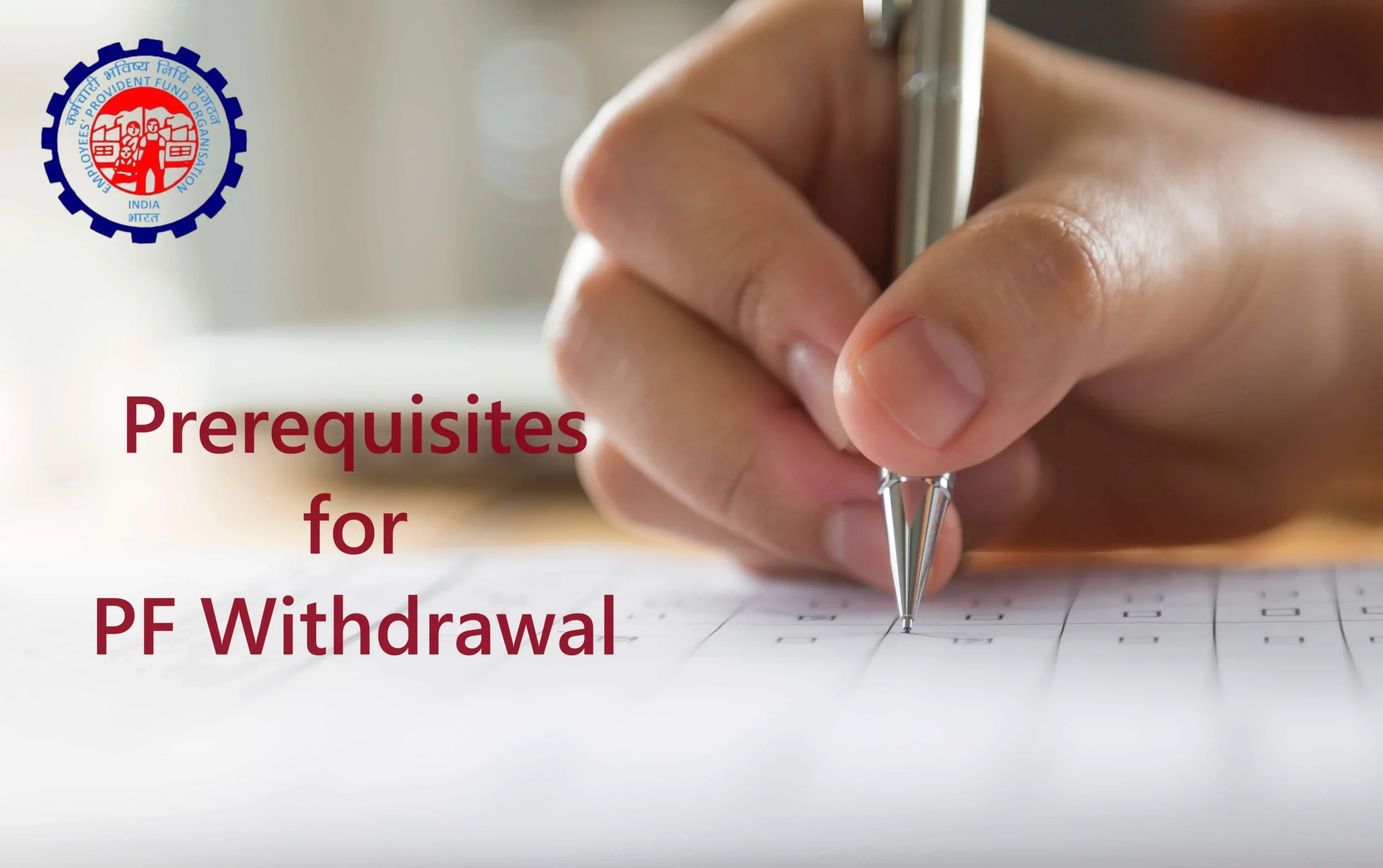Introduction
The Employees’ Provident Fund (EPF) in India is a vital retirement savings scheme that plays a crucial role in ensuring the financial security of employees. It not only serves as a long-term savings avenue, but also allows for fund withdrawal under certain circumstances. However, it is important to understand the prerequisites and conditions that govern the withdrawal process before initiating it.
Prerequisites for PF Withdrawal:
- Employment Termination:
One of the primary prerequisites for PF withdrawal is the termination of employment. You can withdraw your provident fund if you retire, resign, or are laid off. It’s important to note that the withdrawal process may vary based on the reason for termination.
- EPF Account Activation
To initiate the withdrawal process, make sure your EPF account is active and has been receiving regular contributions. Consistent contributions to the EPF account are necessary to build a substantial fund that can be withdrawn when needed.
- KYC Compliance
To facilitate a smooth withdrawal process, ensure that your Know Your Customer (KYC) details are updated and verified. KYC compliance involves linking your Aadhar, PAN, and bank account details with your EPF account.
- UAN Activation
The Universal Account Number (UAN) is a unique identification number provided to EPF members. Before starting the withdrawal process, ensure that your UAN is activated. The UAN makes it easy to track your EPF contributions across different employers.
- Service Tenure
The length of your service tenure can affect the amount you are eligible to withdraw. In the case of premature withdrawal, the amount may be subject to taxation, and the withdrawal may be limited to only the employee’s contribution and interest.
- Reasons for Withdrawal
Different withdrawal forms are available depending on the reason for withdrawal. Whether it’s for retirement, medical reasons, or purchasing a house, it’s important to understand the specific form required for your situation.
- Submission of Withdrawal Form
Once you meet the prerequisites mentioned above, you need to fill out the appropriate withdrawal form. The forms can be found on the official EPFO website or obtained from your employer. Ensure that the form is filled out accurately, providing all the necessary details.
- Bank Account Linking
Linking your bank account details with your EPF account is crucial for the successful withdrawal of funds. The EPFO disburses the withdrawn amount directly to the linked bank account, so it’s important to verify and update this information.
Minimum Service Period for Withdrawal:
The minimum service period required to withdraw PF depends on the purpose and type of withdrawal. Here are some scenarios and their eligibility criteria:
- Unemployment:
If an individual has been unemployed for over a month, they can withdraw up to 75% of the total accumulated amount. If the unemployment period exceeds two months, the remaining 25% can also be withdrawn.
- Education:
PF account holders can withdraw up to 50% of their total contribution to the EPF for higher education expenses, either for themselves or their children after class 10. However, this withdrawal can only be made after contributing a minimum of seven years to the EPF account.
- Marriage:
An account holder can withdraw up to 50% of their portion of the contribution to cover necessary marriage expenses for themselves, their son, daughter, brother, or sister. However, this provision applies only after completing seven years of PF contribution.
- Specially-abled individuals:
Specially-abled account holders can withdraw six months of basic wage along with a dearness allowance or the employee share with interest (whichever is less) to cover the cost of equipment. This facility aims to ease the financial burden of purchasing expensive equipment.
- Medical emergencies:
EPF account holders can withdraw the balance to pay for urgent medical treatments for certain diseases for themselves or immediate family members. The withdrawal amount is limited to six months of basic wage and dearness allowance or the employee share with interest, whichever is less.
- Existing debts:
Individuals can withdraw 36 months of basic wage, dearness allowance, or the total of employee and employer share with interest to pay their home loan EMIs. This facility is available only after contributing to the EPF account for a minimum of ten years.
Pros of Withdrawing PF Balance:
- Financial Support: Withdrawing your PF balance can provide financial support during emergencies or financial crises, offering a safety net when needed the most.
- Flexibility: By tapping into your PF funds, you have the flexibility to use the funds as you see fit. Whether it’s for a major purchase, investment, or paying off debts, the choice is yours.
Cons of Withdrawing PF Balance
- Loss of Interest: When you withdraw your PF balance before retirement, you forget the interest that the amount could have earned had it remained in the fund, potentially affecting your long-term savings goals.
- Retirement Savings: The main purpose of the PF is to provide a financial safety net for your retirement. Withdrawing early means dipping into your retirement savings, potentially leaving you with less funds during your retirement year.
- Tax Implications: If you withdraw your PF balance before completing five years of continuous service, the amount becomes taxable, resulting in a potential financial setback.
Conclusion
Understanding the prerequisites for PF withdrawal is crucial for a hassle-free and timely process. It is recommended to keep track of your EPF account, regularly update your KYC details, and follow the specific procedures outlined by the Employees’ Provident Fund Organization (EPFO). By adhering to these prerequisites, employees can ensure a smooth withdrawal process and access their provident fund savings when needed, providing financial security at different stages of life.

Leave a Reply